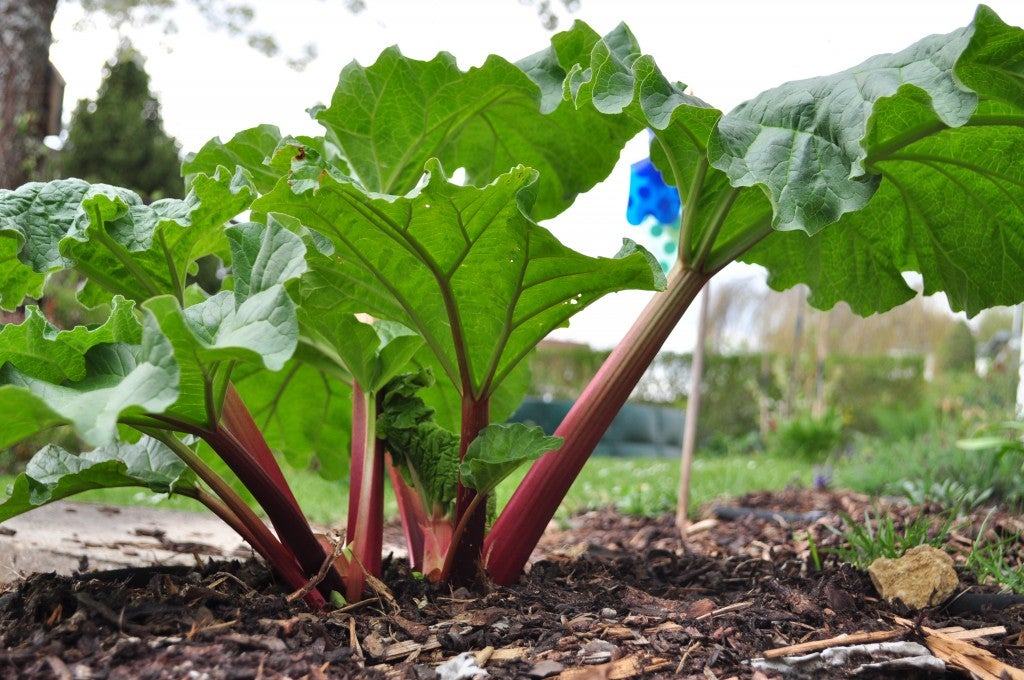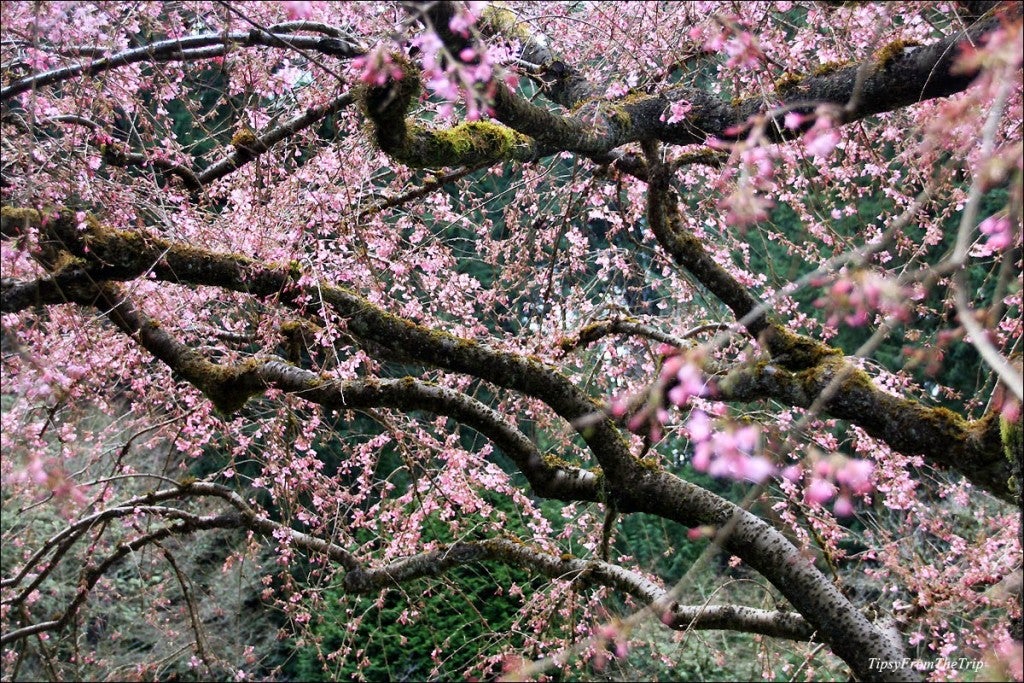All about rhubarb
Listen 0:52:57Your rhubarb is a family heirloom. But you’re moving from a cold clime to Oklahoma, where it can’t survive. Mike McGrath, host of You Bet Your Garden, will offer some options for this seemingly impossible problem. Plus: your fabulous phone calls!
Question of the Week:
“We’re moving from Colorado to Northeast Oklahoma and really want to take our rhubarb with us. The plants have been passed down through my husband’s family and have been in the ground here in Colorado for 16 years. (We’re harvesting this season’s crop right now—in late May.) I understand from reading the article on rhubarb at your website’s “A to Z Answers” section that we’ll need to plant them in an area that’s protected from the afternoon sun in their new, warmer climate. But what should we do with the clumps when we arrive in Oklahoma around August 1st? Should we store them in a cool, dark place and plant them later in the Fall? I really don’t want to leave these family plants behind, but it sounds like our timing is all wrong!”
— Megan, moving from Broomfield Colorado to Northeast Oklahoma
Learn about climate zones for rhubarb »
Don’t bundle your bulbs!
Anne in Media, PA, a former grower of daffodils, questions a trend she’s seen in other gardens around her neighborhood: bundling up the leaves of these spring plants. Well, “bulbs in bondage is a terrible idea,” Mike immediately clarifies. He explains that in nature, spring bulbs appear naturally in the most insane climates of winter chill and summer heat, which is why they have developed a lifestyle of hiding underground. That brief period in time right after the winter snow melts and the soil warms, however, gives those plants an opportunity to quit hiding and safely reveal their beautiful flowers and leaves. Mike emphasizes that after the flower is spent, we enter the most important part of a bulb’s life, when its leaves are nice and green. That’s when it’s growing next year’s flower, Mike tells Anne. People should avoid mowing over those leaves in order to preserve the flower for the following year. Mike advises to let the leaves “luxuriate” in the sun, collecting as much solar energy as possible. The harmful idea of “bulbs in bondage” most likely came from gardeners attempting to create that “perfect” garden appearance. In other words, no floppy, flowerless leaves allowed! According to Mike, daffodils, tulips, crocus, and all other spring bulbs should have their greenery left in place. But as soon as those green leaves begin to change color and yellow- go right ahead and get rid of it. Want to plant other flowers in its place? Dig up the bulb first! “That’s the smartest thing to do,” Mike says to Anne. “Bring them inside and store them in a cool dark place. Right after Halloween take those bulbs out of storage and plant them fresh again.” This way, you can plant all the annuals you’d like without rotting the spring bulbs underneath. That is the best way to ensure return bloom.
Mosquito prevention
Aubrey in Richmond, VA asks Mike about mosquito prevention measures he can take in his garden as the summer season begins to unfold. Mike mentions the basic organic substance, “BT, ” which stands for Bacillus Thuringiensis, a large group of soil dwelling organisms with surprisingly helpful properties in the world of agriculture and pest control. Purchasing BTI Mosquito Dunks at your local hardware store and tossing them into a pond can help prevent mosquitos from breeding there for 30 days. BTI also comes in charcoal briquette and granular form, useful for any standing water. “Early in the season you can leave out buckets of water that you’ve treated with BTI and female mosquitos will lay their first clutches of eggs in those buckets, but the eggs won’t hatch,” Mike tells Aubrey. Aubrey also inquires about the planting mixtures Mike has discussed over the past few shows: compost, vermiculite, and peat moss. Mike pays tribute to Mel Bartholomew and his square foot gardening brainchild, Mel’s Mix, which combines one third of these elements to create a mixture that both drains well and retains water. Mike, however, prefers Perlite to vermiculite. “If you ever buy plants from the garden center and you think there’s little styrofoam balls in the dirt, that’s Perlite. It’s actually a mined volcanic glass that’s popped,” Mike says. “It’s a great way to lighten up the soil.” The importance behind these mixtures and Mel’s square foot gardening method is this light soil, which allows the plant roots to get lots of air, water, and nutrients. But don’t step on those raised beds! It is the uncompressed ground that does the trick.
Reviving asparagus
Jack in Haddon Heights, NJ calls Mike with asparagus problems. This year’s late winter hit the northeast with April snow showers, leaving Jack’s garden soaked and his budding asparagus spears missing and seemingly unsalvageable. After some discussion, Mike discovers that Jack has been planting in soil situated two feet higher than the ground around it. “Generally, asparagus is a crop that’s planted in flat ground because it’s a perennial. You want it to be at the normal level in the ground for winter frost protection,” Mikes tell Jack. Without sufficient drainage, the buried crowns of asparagus were left to rot and die. Mike advises Jack to try again, but to plant at ground level with loose and enriched soil. This is a great opportunity to use well composted horse manure or Perlite. “Make sure you’re not on a raised bed, but high ground. An area that really drains well,” Mike says. “Don’t give up!” Additional tips on planting asparagus are available under Garden Answers A-Z.
Caring for aging trees
George in West Chester, PA lives in a house once owned by 19th century arborist David Townsend, who planted beautiful species across the acre of land, some of which remain. A gorgeous, 200 year old weeping cherry tree still stands over 40 feet tall and approximately nine feet in circumference, splitting into two thick branches about 25 feet up. Unfortunately, George had discovered that half the tree has died, leaving only one of these branches to flower and bloom. With great respect for such an old tree, George had trouble accepting prior advice to just cut it down. Luckily, Mike explains he can indeed save it by cutting the bad part off, but may want to consider other alternatives. Mike suggests that George contact a certified arborist and have him or her look at the tree to estimate it’s remaining life span. If the tree’s life is close to over, cutting off half may shortly lead to complete removal. “Contact local horticulturalists or even the Pennsylvania Horticultural Society. Or, there is a historical tree society that propagates trees like this,” Mike says. “This would be a good time of year for them to take cuttings and make clones of the original tree.” This would give George an opportunity to not only remove the tree, but replant one or more saplings with the same DNA, carrying on the original tree’s heritage. In terms of respecting the tree’s history and the magnificence of these flowering cherries, duplicating would be George’s best option. With Mike’s advice, it can be kept alive in a different form.
WHYY is your source for fact-based, in-depth journalism and information. As a nonprofit organization, we rely on financial support from readers like you. Please give today.



